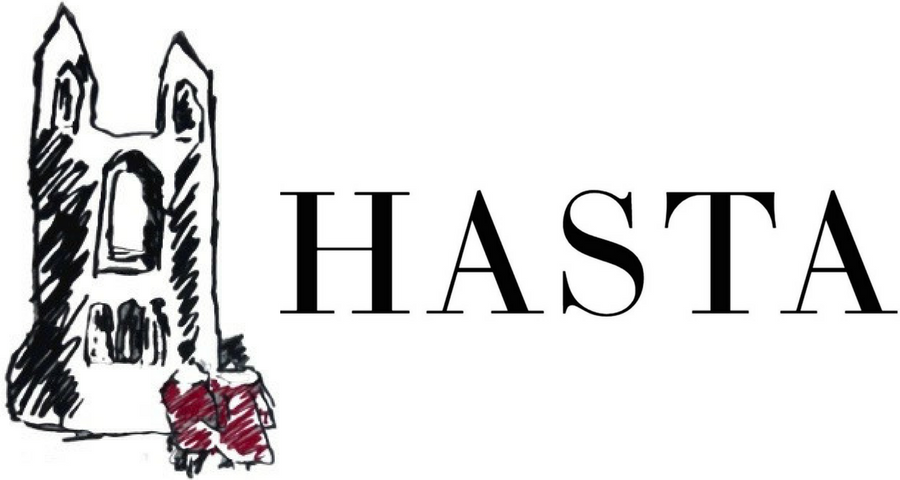Marie Bashkirtseff (1858-1884)
By Toby Berryman
Marie Bashkirtseff, A Meeting, oil on canvas, 193 x 177cm, Musée d’Orsay, Paris.
On 1 October 1884, a then twenty-five-year-old asked ‘why write all this down?’ in her personal journal. Just four weeks later, she was dead, and it was these very (later published) diaries which would secure her reputation for centuries to come. An artist, émigré, diarist, and intellectual, Marie Bashkirtseff lived an undoubtedly engaging life, albeit one cut tragically short by tuberculosis.
Born in Gavrontsi (within present-day Ukraine) to a noble family, Bashkirtseff ultimately settled in Paris and it was there, at the Académie Julian, that she received the formal artistic education that was still denied to most female students globally at this time. In spite of a challenging home-life, following her parents’ divorce and father’s many mistresses, Bashkirtseff’s short-lived artistic career was remarkably successful. She thrice exhibited at the Salon (receiving an honourable mention in 1884) and was a well-praised pupil at the Académie, all at a time when most women were unable to access such institutions. However, these successes were not enough to please the ambitious young Ukrainian, who denounced the ‘really rather poor’ prize-winning paintings at the Salon and even considered herself ‘a worthless creature, humiliated, finished’ after failing to receive such an honour. Bashkirtseff had long aspired to be ‘remembered as a great artist’ and while she often appeared self-aware, her pure passion for the act of painting that left her ‘so happy, so free, so proud’ was clearly unbridled.
Bashkirtseff evidently lived a busy life beyond the easel, too. Her friendship with Jules Bastien-Lepage was well documented and her anonymous writing for feminist newspaper La Citoyenne was especially well received. In particular, her pithy line ‘Let us love dogs, let us love only dogs! Men and cats are unworthy creatures’ continues to be repeated to the very present day. Although it is regrettably believed that a number of her paintings were subject to Nazi destruction in World War Two, Bashkirtseff’s art continues to reside in major collections, from the Musée d'Orsay in Paris to Amsterdam’s Rijksmuseum.
Marie Bashkirtseff, The Umbrella, 1883. Oil on canvas, 93 x 74cm, State Russian Museum, Saint Petersburg.
However, it was really the savvy publication of her diaries (driven by her mother) which truly cemented her name in modern culture. Comprising one hundred and four manuscripts, later praised by PM Gladstone as ‘a book without parallel’ and admired by George Bernard Shaw, the diaries have since been adapted for stage and screen and continue to be published in various formats globally. With English edition subtitles ranging from ‘I am the Most Interesting Book of All’ to ‘Lust for Glory’, their mass appeal and intense readability is frankly undeniable.
And so, although Marie Bashkirtseff enjoyed a life short-lived, her posthumous reputation simply continues to grow. Her artistic career was considerable (not least given contemporary societal struggles), but her greatest fame and reputation was really achieved after her death with the publication of her innermost recorded thoughts and emotions, perhaps the greatest tragedy for someone who longed ‘to live as [a] great artist’ but eventually became all too aware of their own impending death.
Bashkirtseff ultimately wanted her journals published, recognition of a self-identified remarkable life that she assuredly declared ‘will be read’, but it was this decision which would come to overshadow the artistic career to which she once aspired.
Marie Bashkirtseff is buried in Paris within a large-scale elaborate monument that replicates the studio of the artist.
Bibliography
Bashkirtseff, Marie. “The Final Days [Excerpt].” In Marie Bashkirtseff: The Journal of a Young Artist 1860-1884, translated by Mary J. Serrano. New York: Cassell, 1889.
Fremantle, Anne. “Love Is a Dream”. The New York Times, National Edition. December 25, 1966. https://www.nytimes.com/1966/12/25/archives/love-is-a-dream.html.
Musée d’Orsay, Paris. “Un Meeting”. Musee-Orsay-Artworks. https://www.musee-orsay.fr/en/artworks/un-meeting-54.
Reynaerts, Jenny. “A Portrait by Marie Bashkirtseff”. The Rijksmuseum Bulletin 71, No. 2 (2023): 181-189.


